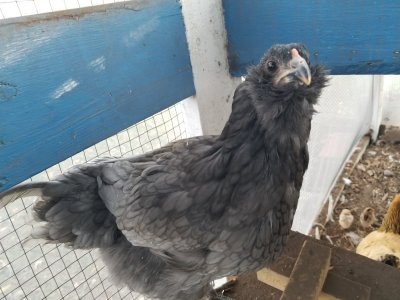Hinotori
Sustainability Master
- Joined
- Nov 2, 2011
- Messages
- 6,472
- Reaction score
- 15,687
- Points
- 373
- Location
- On the foot of Mt Rainier zone 8b
The blue gene is an incomplete dominate modifier of black. One copy gives blue. Two gives splash. It's one of the easier genes to understand. I believe only silkies allow splash at shows, which I still maintain is stupid. Andalusian chickens first had the gene and it's sometimes still called andalusian blue.

ETA: breeding splash to splash can result in birds that are too light with few markings on their feathers. It doesn't always effect the first breeding, but continuous breeding of only splash is detrimental.
ETA: breeding splash to splash can result in birds that are too light with few markings on their feathers. It doesn't always effect the first breeding, but continuous breeding of only splash is detrimental.
Last edited:


 is it yours?
is it yours?